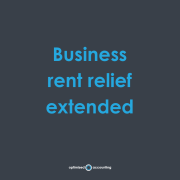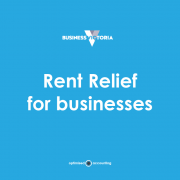If you are selling your business, merging, acquiring, or inviting in new investors, you need to understand the value of your business.
But, to what degree does the pandemic impact on value?
Should you discount or hold firm to pre COVID-19 performance on the basis that ‘we’re going to come out of it eventually’?
Fair market value is the price that would be negotiated in an open market between a knowledgeable, willing but not too anxious buyer and a knowledgeable, willing but not too anxious seller dealing at arm’s length within a reasonable time frame. Value and price may not be the same thing. The price you are offered (or offer), will often depend on the anxiousness of the parties. For example, a seller that does not need to sell where the business being sold adds synergy value to the purchaser, may look to obtain a premium on value. And, even where a quick sale is required it may not be discounted if the liquidated asset value of the business remains high (i.e., the assets of the business are worth more broken up and sold off than as a whole).
However, to understand the value of a business, the pandemic necessitates a depth of investigation beyond the norm. You cannot simply ignore the pandemic and rely on pre-pandemic performance and financials, even if you are enthusiastic about the future. Previously, anyone looking to buy or sell a business would likely analyse the past three years trading figures to help determine a value but this historical analysis may no longer present an accurate picture. For some businesses, history is no longer a reliable predictor of fair value.
The Government controls put in place to contain COVID-19 transmission – closures, social distancing, border and travel restrictions – have a material economic impact. Closures and distancing impact in different ways and need to be considered at both an industry sector and individual business level. Government stimulus packages may also be providing abnormal short-term outcomes.
For some businesses, the operating and financial impact is material. And, this may flow into the underlying value of the business.
All valuations consider present and emerging risks and the current and anticipated business environment. This analysis is then brought into the modelling and valuation conclusion. COVID-19 creates its own set of considerations for analysis including:
- COVID-19 impact at an economic, industry sector and business level.
- The supply chain across the customer and supplier base with a view to identifying possible COVID-19 impacts in the supply chain.
- Earnings normalisation including the removal of stimulus support measures. For the 2020 year, a deeper analysis is likely to be required with possible segmentation by quarter.
- Current and forward year position (see Forecasting during a pandemic)
- COVID-19 risk in applying earnings multiples
- COVID-19 related assumptions
A hypothetical investor might have been prepared to pay $1 million for a business. That business might be on offer for $800,000 and appear as if the investor has struck a bargain. But, the business might actually only be worth $600,000, and not such a good deal after all.
Example
Take the hypothetical example of a printing business. The business has been established for more than 10 years and has a history of profitable operation, with revenues of $5-6 million and EBIT of $800-900k per annum for each of the past 3 years. The business has a large client base of just over 400 active accounts. Trading patterns seem consistent to prior years up to March 2020. Between March and June 2020 there was a 40% downturn with the business closed or working on a limited roster for an 8 week period during the initial COVID-19 lockdowns. The business is currently moving back to normal operations but this is not yet reflected in revenues. The impact of COVID-19 in this scenario might be discounted as the business appears to be returning to normal conditions and it has a solid history of trading and profitability.
The largest customer of the business represents less than 2% of total revenue and the next two largest customers represent just over 1% of revenue. Two of the three customers have resumed their pre COVID-19 printing order levels. A large number of customers seem to spend between $5-20k per annum with the business.
However, during a customer sensitivity analysis, it’s found that 70% of customers are from the live entertainment sector (although their two largest clients are not in this sector). As a result, the business is likely to have a material downturn until the entertainment industry resumes or the business is able to replace the business it has lost. A consequence of this is that value may be impacted.
How are businesses valued?
Almost all businesses are valued by one of two methods.
The first is the industry approach, where sales of similar businesses are used for comparison. The basis of this method is that the market provides a reliable indicator of value. This method works best in a stable and active market and where recent history is a reliable indicator of the present. But, COVID-19 casts doubt on the reliability of past sales that occurred outside of pandemic conditions.
The other typical method of valuing a business is based on its maintainable earnings. This method is used for businesses with a trading history where it’s likely that the value of the business will exceed the underlying value of its assets. This method determines the future maintainable earnings of the business, an appropriate earnings multiple, and the value of any assets surplus to the core business. The multiple applied to the business may be impacted by COVID-19 as the multiple falls as risk increases. For example, a business that was valued at four times earnings pre-pandemic might achieve a lower multiple as the pandemic presents a risk to the likelihood of the business achieving earnings consistent with pre-pandemic conditions.
Unlike the ASX, there is no index to indicate the value of private businesses. The pandemic has added significantly greater complexity to the valuation process, meaning buyers and sellers should work even more closely with their advisers before making a decision.
If you are purchasing a business and would like a due diligence completed, or looking to sell, merge or engage with investors, contact us for more details on the steps to take.
Sign up to our newsletter
Sign up to our monthly newsletter to receive due dates, news, tax tips and other important things that we think are useful and interesting throughout the year.
This article was written by a third party.











